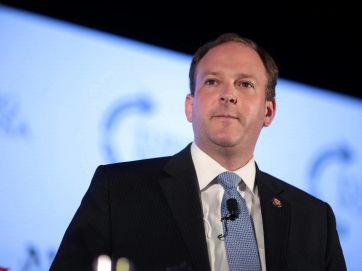Proposal
Peter Wood, President
The National Association of Scholars
Updated September 30, 2011
Editor’s introduction: The following is a proposal by the National Association of Scholars for a project examining the curriculum, student activities, and campus values of Bowdoin College as a case study to learn what a contemporary liberal arts college education consists of. Our larger goal is to create a template for how such a rigorous study could be undertaken at other liberal arts colleges and universities.
The proposal is fully funded by Thomas Klingenstein and the project began on Monday, September 26, 2011. We invite
What does a contemporary liberal arts college actually teach? The question might on its face seem easy to answer. Pick a college, visit its catalog, and read the general requirements for graduation and observe what academic majors it offers. If one seeks a fuller picture, read the requirements for particular majors and examine the course descriptions.
These reasonable steps, however, fall considerably short of actually answering the question. That’s because so much of what a liberal arts college teaches transpires at other levels. The education that students receive at a liberal arts college is shaped, for example, by the books and articles that faculty members select as required readings in their courses—and by the authors and books they choose not to teach. A liberal arts education is also shaped by the matters that are emphasized through the college’s extra-curricular activities, residence life policies, student government, and disciplinary codes. Anyone who has attended a liberal arts college knows that yet another significant part of the education comes from the community itself. Students in a four-year residential college are powerfully, if not always consciously, shaped by the values and expectations of their college community.
These three components of what a liberal arts college teaches—the underlying intellectual substance of academic courses, the programmatic emphases of organized student activities, and the values diffused in the college community—are by no means invisible. They can be traced and held up for examination, and indeed, students at most liberal arts colleges spend some of their time reflecting on and debating these matters. Is the college sufficiently committed to diversity? To sustainability? Has it done enough to promote social justice? Or, alternatively, is it scanting the views of conservatives?
While these discussions among students (and sometimes faculty members) are a genuine part of liberal learning, such discussions seldom rise to the level of systematic inquiry and they don’t serve as anything like a disinterested examination of what a college actually teaches. In that light, the National Association of Scholars proposes to undertake just such an examination of one college:
Why a
American higher education is probably among the most studied of all institutions. Its elite colleges and universities stand out as especially well-examined. Some studies have famously looked at elite colleges as a group (e.g. William G. Bowen and Derek Bok’s The Shape of the River, 1998), while others have examined particular colleges, (e.g. Clayton M. Christensen and Henry J. Eyring’s The Innovative University, 2011.) The choice between a broader sample and a single case depends among other things on whether the goal is to trace the variations in a well-known phenomenon or to characterize a phenomenon that has yet to be carefully delineated. Our aim is to build a well-rounded portrait of contemporary elite liberal arts education. Behind this aim is a question: does such an education bear the stamp of any particular ideology or political outlook? The prospects of drawing the portrait and answering the question depend on acquiring in-depth understanding more in keeping with the case study approach. We hope, however, to provide the kind of study that can be repeated elsewhere and eventually lead to well-grounded comparative scholarship on this topic.
To our knowledge, no one has undertaken this particular kind of inquiry before now.
Why Bowdoin?
In his fall 2010 convocation address, Bowdoin president Barry Mills set out to address “conflicting themes that have me confused, uncertain, and genuinely concerned about the vitality and viability of the liberal arts sector in general and, to some extent over the very long term, Bowdoin in particular.” He noted that, “By all objective measures—and by many that are subjective—Bowdoin stands today at the top of the education marketplace.” But he went on to discuss some problems, including rising costs and fees, and the perception that Bowdoin “costs too much,” and the complaint of a grandfather that Bowdoin had become “simply a liberal hotbed disconnected from reality.” Mills also told an anecdote about a golf game he had had with “a guy,” identified only as an alumnus of Williams College, who rudely interrupted several of Mills’ swings with interjections such as, “I would never support Bowdoin—you are a ridiculous liberal school that brings all the wrong students to campus for all the wrong reasons." Mills took the supposed comments sufficiently seriously to walk “off the course [at the end of the match] in despair and with deep concern.”
In his convocation speech, Mills refused to brush the criticism aside and declared that Bowdoin “must be willing to entertain diverse perspectives throughout our community.”
Because this passage in President Mills’ speech serves as our warrant for choosing to focus on
Civility and respect are essential at Bowdoin, but we must guard against political correctness and a culture where everyone—students, faculty, and staff—is supposed to feel "comfortable." We value, as one of our highest priorities, the Bowdoin sense of community and collegiality, and we should continue to do so. However, we should be willing to incorporate more vigorously a diversity of views into that sense of community. Creative tension is a positive force in a community committed to intellectual excellence and vitality.
There should never be a time when we have a political litmus test for faculty or even inquire about political persuasion. In my view, this is simply not relevant to the intellectual enterprise of the College. But at the same time, we should be willing and more active in bringing to this community recognized and accomplished scholars—as visitors or tenure-track professors—who engage their disciplines, academic work, and artistic work with perspective different from the conventional wisdom at Bowdoin or on other campuses. This different perspective will energize our classrooms and the intellectual life of our faculty and our community.
As it happened, the unnamed golf partner in President Mills’ story came forward with a rather different account of what transpired on the links that day and a very different interpretation of Mills’ intent. Thomas Klingenstein published his response (“A Golf Story”) in April 2011 in the Claremont Review of Books. Mr. Klingenstein claimed that Mills’ version of the conversation (in which Klingenstein was portrayed as a buffoon if not a racist) was a serious distortion. This, in Klingenstein’s view, reflected Mills’ “unwillingness to take seriously the conservative perspective.” Mr. Klingenstein gave Mills credit for raising an important problem but questioned Mills' commitment to seriously address it.
An Unresolved Conflict
Klingenstein’s reply to Mills provoked various responses, including a reply in the student newspaper, Bowdoin Orient, by two juniors, “Klingenstein’s article gives an inaccurate account of Bowdoin curriculum,” and another article, “Professors react to charges levied in Claremont Review.” Klingenstein responded to these criticisms in the Orient to the effect that his critics had not answered him satisfactorily. He conceded however that his own charges remained unsubstantiated and, noting that both sides were making factual claims without sufficient evidence, called for further study.
On May 16, 2011, Klingenstein spoke at
So far President Mills has not publicly responded to Klingenstein, but neither has he retracted his original statements. We have the case of a college president who has asserted that his college “should be willing to incorporate more vigorously a diversity of views” into its community, but who has not said specifically in what ways that community now falls short of this mark or what might be done to remedy the situation. Mr. Klingenstein, for his part, admits that as an outsider he has limited knowledge of what Bowdoin really teaches. His initial characterizations of the Bowdoin curriculum have been disputed by some faculty members and students.
Thus
Why the National Association of Scholars?
The National Association of Scholars, founded in 1987, is a non-profit independent association that works to foster intellectual freedom and to sustain the tradition of reasoned scholarship and civil debate in
Among its recent reports are The Vanishing West: 1964-2010, a detailed examination of the curricula of 125 colleges and universities focusing on survey courses on Western and American history, and The Scandal of Social Work Education, a study of the curricula of schools of social work and the influence of national organizations on those curricula. The best known of NAS’s research reports is The Dissolution of General Education, 1914-1993, a study of the changing organization and content of curricula at fifty elite institutions.
NAS has a long record of well-respected research on college curricula and other components of colleges and universities, including college admissions, residence life, and student activities.
NAS is often characterized as a politically conservative organization, but that is only accurate if what is meant by "conservative" is steadfast commitment to the liberal arts. NAS brings to its research a high regard for clarity, transparency, academic freedom, rational inquiry, demanding intellectual standards, curricular coherence, disciplined and disciplinary study, substantive as well as procedural knowledge, and written and spoken exposition. NAS has a long history of criticizing academic programs and colleges and universities that compromise these desiderata, and NAS has been especially forceful in criticizing institutions that have permitted illiberal ideologies to interfere with undergraduate education.
This is to say that a study of Bowdoin carried out by the National Association of Scholars is sure to pay close attention to the role, if any, of ideology in diverting students from the educational goals of a liberal arts education. NAS’s findings, however, will have to stand on their own as documented facts open to inspection and review by anyone.
A Study
We propose a six-month study to commence early in the fall semester 2011 and to be completed by mid-spring semester 2012. The object of the study would be to determine, according to reasonably strict research protocols, the content of a
Design
The study aims at gathering and analyzing data on three fairly distinct aspects of a liberal arts education: the curriculum, student life, and campus community. (These areas, of course, overlap, but they are sufficiently different to require different forms of inquiry.) We cannot know in advance all of the sources of information that will prove relevant, so our research design must have a degree of flexibility to accommodate the unexpected. We also anticipate that there will be obstacles to our inquiries that may require a search for proxy forms of data.
The study will involve several stages:
Phase 1. Initial identification of sources and scoping of research opportunities.
Phase 2. Intensive data-gathering; continuous assessment of interim findings; and recalibration of inquiries.
Phase 3. Comprehensive analysis and supplemental data-gathering
Phase 4. Drafting of report; identification of gaps; final data-gathering and reanalysis
Phase 5. Final report.
Protocol
We expect that a substantial body of the needed data will be available online via the college’s own website, the websites of individual faculty members, and other sources that are easily accessible. Part of phase 1 will be to determine if this expectation is justified. Justified or not, the sources of data we seek to examine include course syllabi, documents describing the organization and content of student activities, and back issues of the Bowdoin Orient. Detailed research protocols will be established during Phase 1.
Ethical Guidelines
The National Association of Scholars intends this project to be open and transparent. We do not seek and will not publish confidential information or documents that we have any reason to believe were obtained by unlawful or unethical means. We understand that in some cases students or faculty members will request that their names and identities be withheld from publication. Any decision to use material from an anonymous source will depend on our first having made a conscientious effort to corroborate any factual claims from independent sources. To the extent possible, we would like to base the entire report on publicly accessible and verifiable sources.
It is not our intention to publish rumor, gossip, or innuendo, or to rely on such material in framing judgments. Some aspects of this study will indeed require judgments on our part as to how to interpret data. Our goal is to interpret data accurately and fairly and to make clear the basis of our judgments.
People may choose to contact us anonymously. We will discourage that and encourage those who do contact us to identify themselves to us. In cases where speaking on the record might entail a risk of retaliation, we will respect the privacy of the individual who speaks, but we intend to minimize the use of such sources.
Other Considerations
We hope the Bowdoin College administration will welcome this study or cooperate with the research component of it. We recognize that it may not. We will, however, invite such cooperation and be transparent about our plans.
This proposal offers something quite different from accreditation reviews. We do not seek to evaluate every aspect of a college. The proposed study leaves to one side questions of finance, admissions, development, alumni relations, job placement, among many other things. Rather, we attempt to provide a holistic portrait of what a college actually teaches its students, inside and outside the classroom.
We have appointed a research fellow, who is a recent liberal arts college graduate, but not from Bowdoin, to assist with this work. Our criteria in choosing the research fellow included the need to find someone who would be scrupulously open-minded attempt to answer the questions we have raised. We have appointed Michael Toscano to the position.
Mr. Toscano is a 2008 graduate of The King's College (New York City) where he studied in the interdisciplinary program in Politics, Philosophy, and Economics. After graduating he served as a volunteer for the Christian Foundation for the Holy Land, a non-profit based in Jerusalem and in 2010-2011 was a teaching associate at The King's College for a two-semester course, "History of the West." He has published several online articles including: “The Saturnine Age and the Modern Genius”; “The Myth of Fairy Inferiority”; “On the Meaning of Baseball (and a Suggestion)”; “A Man For Others: The Life Story of Dietrich Bonhoeffer.” He lives in Brooklyn.
If Bowdoin College is at first reluctant to cooperate with our project, it will, we hope, eventually come round to seeing the merits of our approach.













